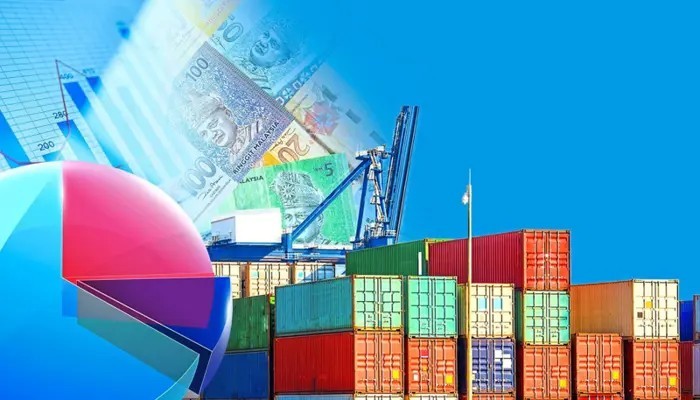
KUALA LUMPUR: Malaysia’s diversified exports, both in terms of products and markets, mean that the country will be more resilient to external headwinds, including tariffs and trade restrictions, says Bank Negara deputy governor Datuk Marzunisham Omar.
While predicting a more moderate export growth rate of 5.2% this year, compared to 5.7% in 2024, he opined that Malaysia would be better cushioned from external challenges due to its diverse export markets, including Asean, China, the United States, the European Union, Advanced Asia and the rest of world.
Marzunisham was speaking at the 2025 BNM Governor’s Address on the Malaysian Economy & Panel Discussion, organised by the Malaysian Economic Association (MEA).
While Asean unsurprisingly accounts for 29% of Malaysian goods exports, the other aforementioned regions also hold meaningful shares of the Malaysian export market. The United States makes up 13.2%, China 12.4% and Advanced Asia 19.4%, with the rest of the world holding 19.2%.
For context, Advanced Asia refers to countries like Australia, Hong Kong, Japan, South Korea, New Zealand, Singapore and Taiwan.
Marzunisham revealed that semiconductor products make up 25.7% of Malaysian exports, with other electrical and electronics (E&E) goods accounting for another 14.2%, while non-E&E products command 45.6%.
With Malaysia recording travel receipts of RM95.7bil in 2024, the deputy governor said Bank Negara expects tourism to outperform last year’s numbers, forecasting tourist receipts of RM104.7bil for 2025.
“Tourism will be supported by increased flight connectivity, the extension of visa-free policies, as well as promotions that are being introduced leading up to Visit Malaysia Year in 2026,” Marzunisham said.
Meanwhile, he noted that there is room for wages in Malaysia to catch up with productivity.
He cited the statistic that between 2019 and 2024, productivity grew by 5.3%, but real wages per worker actually declined during the same period.
Real wages refer to the purchasing power of an employee’s wages, taking into account inflation and the cost of living, rather than just the nominal amount earned.
He said: “This is where we have urged employers to provide fair and adequate pay to their employees, because while headline inflation for last year was at 1.8%, wage growth has not kept pace with price increases.
“There are elevated price levels post-lockdowns despite low inflation, and lower-income households are more vulnerable, as a higher proportion of their incomes is spent on food.”
Marzunisham added that Malaysia’s compensation to employees as a percentage of gross domestic product (GDP) stands at 33%, which he described as low, given that operating surplus constitutes approximately 60% of GDP.
Fellow chartered banker and council member at the Asian Institute of Chartered Bankers, Datuk Yvonne Chia, agreed with Marzunisham, noting that the mood on the ground is “not very good” regarding wages at present.
She further cautioned that while the government is considering and implementing higher employee compensation, many profitable companies are still downsizing in an effort to adopt more environmental, social, and governance practices, as they face disruptions from artificial intelligence.
Marzunisham stated that government-linked companies have taken the lead in increasing productivity and wages.
However, because the majority of corporations in Malaysia are small and medium enterprises, these companies need more guidance, especially in the adoption of digitalisation, which would lead to higher productivity and wages.
On the ringgit, the deputy governor said Bank Negara will work with its Asean counterparts to encourage businesses to use local currencies in facilitating trade within the region.
He said the central bank’s focus at the country level, with Malaysia serving as chair of Asean this year, is to explore how the region can work together to further strengthen inter-regional trade and investment flows.
“We are looking at building a more inclusive financial system that will benefit the people in the region. We are also looking at how the financial sector can come together to help finance some of the major sustainable projects in the region.
“These are among the priorities that Malaysia is taking this year in the finance agenda as the Asean chair,” he told reporters after the event organised by MEA yesterday.
He said the central bank will continue to adopt a data-driven approach in evaluating the impact of economic developments on inflation and growth.
While several central banks have recently started cutting policy interest rates, Marzunisham said Bank Negara’s monetary policy remains guided by Malaysia’s specific economic condition.
“We are aware of what other central banks are doing, but our primary focus when determining monetary policy is the outlook for growth and inflation in our own economy,” he said.
Marzunisham said some supply shocks can have a deflationary impact on growth, and that they can arise from both external and domestic factors, such as disruptions in global supply chains or policy changes within Malaysia.
“For example, if the government decides to lower the price of RON95 petrol or rationalise fuel subsidies, this constitutes a supply shock. In such cases, prices are likely to adjust accordingly,” he said.
Managing these shocks will require a delicate balance in monetary policy, considering both price adjustments and their impact on economic growth.
Source: https://www.thestar.com.my/business/business-news/2025/03/27/export-variety-to-help-cushion-malaysia-from-external-shocks

